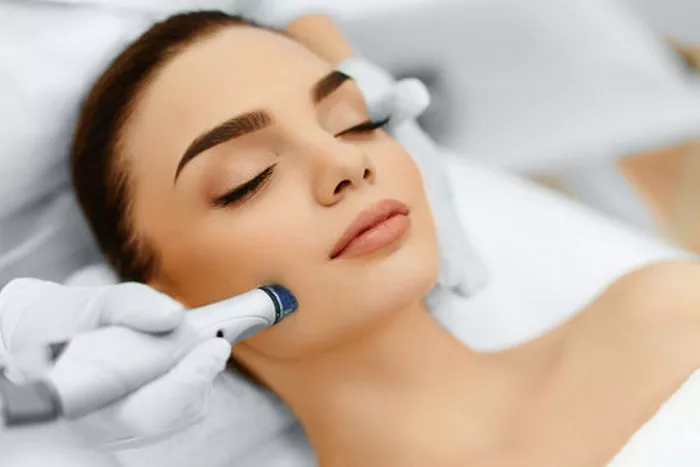Microdermabrasion is a popular non-invasive cosmetic procedure that can improve the appearance of the skin by removing dead skin cells and stimulating collagen production. While microdermabrasion can be performed year-round, there may be certain times of the year that are best for optimal results. In this article, we will explore the benefits of microdermabrasion and provide guidelines for when it may be best for microdermabrasion treatment.
The Benefits of Microdermabrasion:
Microdermabrasion is a cosmetic treatment that uses a device to exfoliate the skin and remove dead skin cells. This process can help improve the appearance of the skin in several ways.
Improves Skin Texture:
Microdermabrasion can help improve the texture of the skin by removing dead skin cells and stimulating collagen production. This can help reduce the appearance of fine lines, wrinkles, and acne scars.
Reduces Hyperpigmentation:
Microdermabrasion can help reduce hyperpigmentation, such as age spots and sun damage, by removing the outer layer of skin where the pigmentation is located.
Increases Skin Radiance:
Microdermabrasion can help increase the radiance of the skin by removing dull, dead skin cells and revealing brighter, more youthful-looking skin.
Enhances Product Absorption:
Microdermabrasion can enhance the absorption of skincare products by removing the outer layer of skin and allowing products to penetrate deeper into the skin.
Best Time for Microdermabrasion:
While microdermabrasion can be performed year-round, there may be certain times of the year that are best for optimal results.
Fall and Winter:
Fall and winter may be the best time for microdermabrasion treatment, as the cooler temperatures and lower humidity levels can help minimize the risk of post-treatment complications such as sunburn and hyperpigmentation. Additionally, during the fall and winter months, people tend to spend more time indoors, which can help protect the skin from environmental factors that can cause damage.
Spring and Summer:
Spring and summer may not be the best time for microdermabrasion treatment, as the warmer temperatures and higher humidity levels can increase the risk of post-treatment complications such as sunburn and hyperpigmentation. Additionally, during the spring and summer months, people tend to spend more time outdoors, which can increase the risk of sun damage.
Before Special Occasions:
Microdermabrasion can be a great way to prepare for special occasions such as weddings or reunions. However, it is important to schedule the treatment at least one week before the event to allow time for any redness or irritation to subside.
Before Vacation:
Microdermabrasion can be a great way to prepare for a vacation, as it can help enhance the radiance and texture of the skin. However, it is important to schedule the treatment at least two weeks before the vacation to allow time for any redness or irritation to subside and to avoid sun exposure immediately after the treatment.
When Skin Needs a Boost:
Microdermabrasion can be performed at any time when the skin needs a boost, such as after a period of stress or illness. It is important to consult with a skincare professional to determine the best timing for microdermabrasion treatment based on individual skin needs and concerns.
Factors to Consider When Choosing the Best Time for Microdermabrasion:
When choosing the best time for microdermabrasion treatment, there are several factors to consider.
Skin Type:
Different skin types may react differently to microdermabrasion treatment. Individuals with sensitive skin may want to avoid treatment during the summer months when the risk of sunburn is higher.
Sun Exposure:
It is important to avoid sun exposure immediately after microdermabrasion treatment, as the skin may be more sensitive to UV rays. This is especially important during the spring and summer months when the risk of sunburn is higher.
Lifestyle:
Individuals with an active outdoor lifestyle may want to consider scheduling microdermabrasion treatment during the fall or winter months when they are less likely to be exposed to environmental factors that can cause damage to the skin.
Treatment Goals:
The timing of microdermabrasion treatment may also depend on individual treatment goals. For example, if the goal is to reduce hyperpigmentation, it may be best to schedule treatment during the fall or winter months when the risk of post-treatment complications such as sunburn and hyperpigmentation is lower.
Recovery Time:
It is important to consider recovery time when scheduling microdermabrasion treatment. Individuals who have a busy schedule may want to schedule treatment during a time when they can take a few days off to allow for proper recovery.
Conclusion:
Microdermabrasion is a popular cosmetic treatment that can improve the appearance of the skin by removing dead skin cells and stimulating collagen production. While microdermabrasion can be performed year-round, there may be certain times of the year that are best for optimal results. By understanding the benefits and timing of microdermabrasion treatment, individuals can achieve the best possible outcomes and enjoy radiant, youthful-looking skin. When choosing the best time for microdermabrasion treatment, it is important to consider individual skin type, sun exposure, lifestyle, treatment goals, and recovery time. By working closely with a skincare professional, individuals can determine the best timing for microdermabrasion treatment based on their individual needs and concerns.

